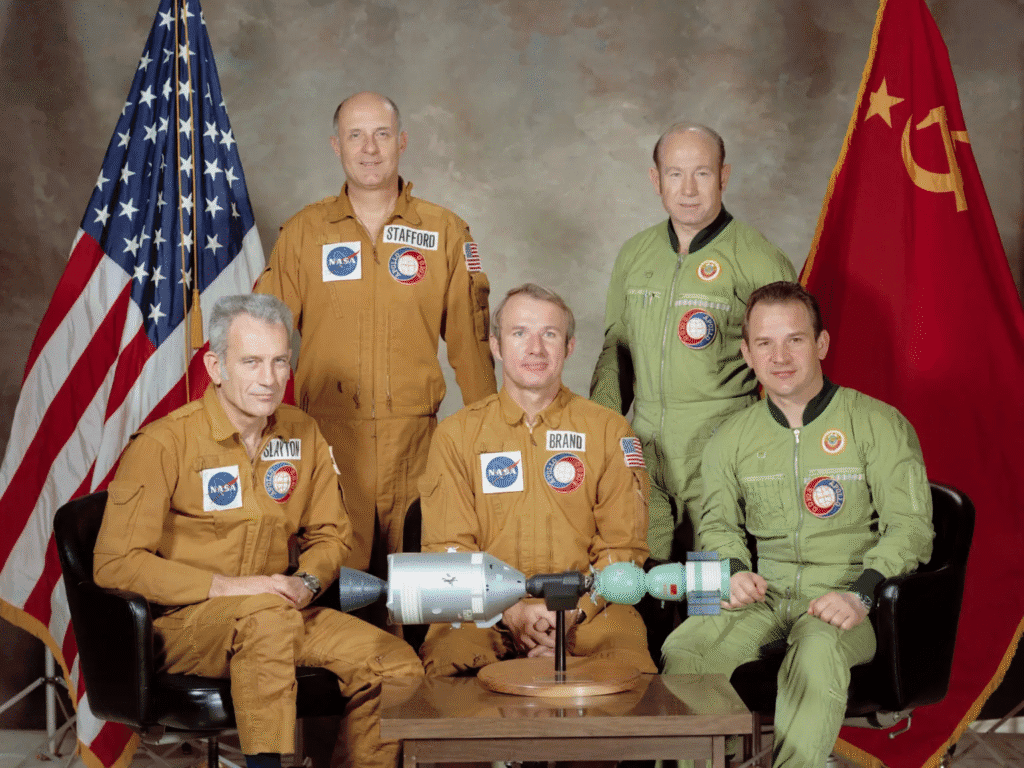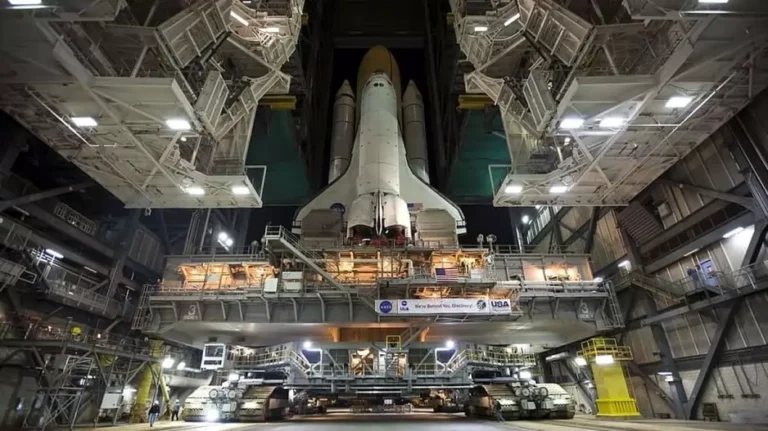Introduction
On July 17, 1975, an extraordinary event unfolded far above Earth that would forever shift the dynamics of space exploration and international cooperation. American astronauts and Soviet cosmonauts met and shook hands in orbit, marking the first joint space mission between two Cold War rivals. Known as the Apollo-Soyuz Test Project (ASTP), this mission wasn’t just about technology—it was a bold political and human statement. As we mark 50 years since that historic moment, its legacy continues to inspire new generations in both diplomacy and space science.
A Mission Beyond Politics
The 1970s was a period marked by Cold War tensions, yet also by a brief thaw known as “détente.” It was in this context that the United States and the Soviet Union agreed to collaborate on a joint spaceflight. This was no small feat. Engineers from both nations had to overcome technological incompatibilities, language barriers, and mutual distrust. But by July 1975, their efforts culminated in a successful docking between an American Apollo spacecraft and a Soviet Soyuz capsule.

A Historic Handshake
When Apollo commander Thomas Stafford and Soyuz commander Alexei Leonov met in space and shook hands through the open hatch between their spacecraft, the moment became one of the most iconic images of the 20th century. This handshake, captured by cameras and broadcast around the world, symbolized a dramatic shift from confrontation to cooperation at the height of the Cold War.
The significance extended far beyond symbolism. The two crews, despite speaking different languages and being raised under opposing ideologies, collaborated seamlessly in orbit. They conducted joint press conferences, gave each other tours of their respective spacecraft, and shared meals—including a humorous gesture where the Soviet crew served a tube labeled “vodka” that actually contained borscht. These activities humanized the mission, proving that camaraderie and mutual respect could thrive even 140 miles above geopolitical disputes.
In addition to symbolic gestures, the crews engaged in meaningful dialogue about the future of space exploration. They discussed mutual scientific interests and emphasized the importance of future cooperation. This mission was a living demonstration that space could transcend earthly boundaries—not only technologically, but socially and politically. The handshake between Stafford and Leonov endures as a timeless emblem of what humanity can achieve when unity triumphs over division.
Scientific and Technological Contributions
The Apollo-Soyuz Test Project (ASTP) was a landmark in scientific collaboration, delivering not just diplomatic significance but a range of valuable research and technological innovations. The mission included coordinated experiments across various fields such as solar physics, Earth atmospheric studies, space medicine, and materials science. Both spacecraft carried instruments to study solar eclipses and observe Earth’s atmosphere and weather patterns, contributing to early environmental monitoring efforts from space. Experiments on biological adaptation to microgravity provided insights into the long-term effects of space travel on the human body, influencing future protocols for astronaut health.
One of the most lasting achievements of ASTP was its contribution to spacecraft engineering. The mission led to the development of the Apollo Docking Mechanism and the compatible APAS (Androgynous Peripheral Attach System), which allowed two differently designed spacecraft to safely connect in orbit. This technological breakthrough paved the way for future joint missions and was crucial in the creation of docking interfaces used in the Shuttle-Mir missions and later in the International Space Station (ISS). The APAS design principles still influence modern docking systems, emphasizing interoperability between spacefaring nations.
Moreover, the mission demonstrated how standardized design and collaborative engineering could overcome ideological divides, offering a working model for multinational missions. The ASTP thus served as a testing ground for not only scientific experiments but also for the cooperative frameworks that would define the future of space exploration.
A Legacy that Shaped the Future
The Apollo-Soyuz Test Project set the precedent for future U.S.-Russia collaborations, laying the foundation for decades of international partnership in space. In the 1990s, this legacy evolved into the Shuttle-Mir Program, which involved American space shuttles visiting and docking with Russia’s Mir space station. These missions helped both nations prepare for the next major leap: the development and maintenance of the International Space Station (ISS), which remains a global hub for scientific research and cooperation.

Beyond institutional agreements, ASTP forged enduring personal relationships among astronauts and cosmonauts. The shared mission experience fostered mutual understanding and deepened respect between individuals who had once been ideological adversaries. These bonds not only enriched future collaborations but also helped promote a culture of peace and cooperation within the broader international space community.
ASTP’s influence also extended into public imagination and the careers it inspired. Mike Fincke, a veteran NASA astronaut, vividly recalled watching the mission on TV as a child and credited it as a pivotal moment that shaped his desire to venture into space. This emotional resonance speaks to ASTP’s role not just in technical or diplomatic progress, but in igniting passion and hope in future generations of explorers, engineers, and dreamers.
In this way, the Apollo-Soyuz Test Project transcended its immediate objectives and became a cornerstone of collaborative space exploration—demonstrating that even in times of global tension, humanity can unite to reach for the stars.
Lessons for Today
As international cooperation in space continues to expand, the Apollo-Soyuz mission remains a critical lesson in diplomacy, innovation, and shared human achievement. In today’s evolving geopolitical climate, where nations both compete and collaborate in the new space race, the spirit of ASTP reminds us that the cosmos belongs to all of humanity.
Moreover, the ASTP highlights the enduring value of transparency, communication, and mutual respect in achieving shared goals. As space becomes increasingly commercialized and more countries develop independent space programs, the lessons from this joint mission are more relevant than ever. Whether navigating lunar settlements or Mars expeditions, future explorers and policymakers can look to the Apollo-Soyuz mission as a blueprint for building trust, harmonizing technology, and fostering unity in the vast theater of space.
Conclusion
Fifty years after that first handshake in space, the Apollo-Soyuz Test Project continues to resonate as a symbol of what we can accomplish when we look beyond borders and work together. At Universe Bangla, we celebrate this milestone not just as a historical event, but as a beacon lighting the way forward for peaceful and productive exploration of the universe.
The enduring significance of ASTP lies not only in the moment it created, but in the movement it launched—a movement toward unity in the pursuit of knowledge, exploration, and shared destiny beyond Earth. As we look ahead to an era of lunar bases, Mars colonization, and deeper ventures into our solar system and beyond, the Apollo-Soyuz mission reminds us that collaboration isn’t just beneficial; it’s essential. The partnerships forged in orbit half a century ago remain a guiding light for global cooperation in the vast, shared frontier of space.



